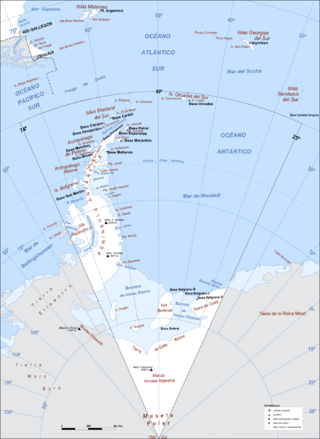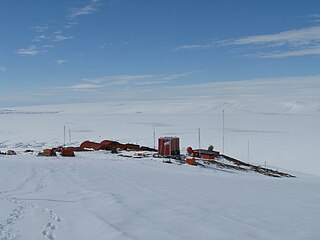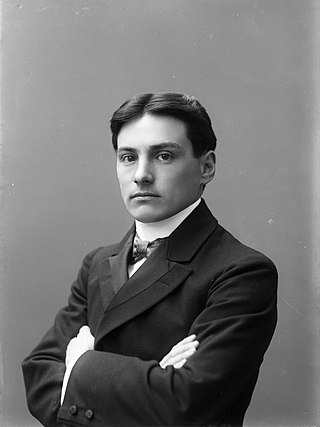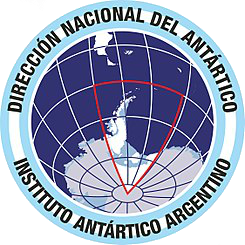
The Weddell Sea is part of the Southern Ocean and contains the Weddell Gyre. Its land boundaries are defined by the bay formed from the coasts of Coats Land and the Antarctic Peninsula. The easternmost point is Cape Norvegia at Princess Martha Coast, Queen Maud Land. To the east of Cape Norvegia is the King Haakon VII Sea. Much of the southern part of the sea is covered by a permanent, massive ice shelf field, the Filchner-Ronne Ice Shelf.

The Filchner–Ronne Ice Shelf or Ronne–Filchner Ice Shelf is an Antarctic ice shelf bordering the Weddell Sea.

ARA Almirante Irízar is a large icebreaker of the Argentine Navy. She was ordered from a shipyard in Finland in 1975.

Argentine Antarctica is an area on Antarctica claimed by Argentina as part of its national territory. It consists of the Antarctic Peninsula and a triangular section extending to the South Pole, delimited by the 25° West and 74° West meridians and the 60° South parallel. This region overlaps with British and Chilean claims in Antarctica. None of these claims have widespread international recognition.

Belgrano II Base is a permanent, all year-round Argentine Antarctic base and scientific research station named after General Manuel Belgrano, one of the Libertadores and the creator of the Argentine Flag. It is located on Bertrab Nunatak on the Confín Coast, Coats Land.

Marambio Station is a permanent, all year-round Argentine Antarctica station named after Vice-Commodore Gustavo Argentino Marambio, an Antarctic aviation pioneer. It is located in Marambio Island, Graham Land, Antarctic Peninsula, some 100 km (60 mi) from the coastal civilian village of Esperanza.

Luitpold Coast is that portion of the coast of Coats Land extending from the vicinity of Hayes Glacier, at 27°54′W, to 36°W, which is regarded as the eastern limit of the Filchner Ice Shelf. It was discovered by Wilhelm Filchner, leader of the Second German Antarctic Expedition, 1911–12, and named after Luitpold, Prince Regent of Bavaria.

ARA Patagonia (B-1) is a multi-product replenishment oiler of the Durance class in service in the Argentine Navy. She was the lead ship of her class serving in the French Navy as Durance from 1977 to 1999. In French service, the ship served with the Force d'action navale. In Argentine service the vessel is used in multi-national naval exercises and supplies the Antarctic missions operating from Ushuaia. In 2017, Patagonia was used to search for the missing submarine ARA San Juan.

Port Belgrano Naval Base is the largest naval base of the Argentine Navy, situated next to Punta Alta, near Bahía Blanca, about 560 km (348 mi) south of Buenos Aires. It is named after the brigantine General Belgrano which sounded the area in late 1824.

San Martín Base is a permanent, all year-round Argentine Antarctic base and scientific research station named after General José de San Martín, the Libertador of Argentina, Chile and Perú. It is located on Barry Island, Marguerite Bay, Antarctic Peninsula.

Alférez de NavíoJosé María Sobral was an Argentine explorer, geologist, naval officer and author who rose to prominence by participating in the Swedish Antarctic Expedition (1901–1904) becoming the first Argentine to overwinter in Antarctica. Later he pursued studies at Uppsala University becoming the first Argentine to obtain a geology degree. Sobral worked briefly as ambassador to Norway in 1930 before returning to Argentina to work at YPF.

The Instituto Antártico Argentino is the Argentine federal agency in charge of orientating, controlling, addressing and performing scientific and technical research and studies in the Antarctic.

Ellsworth Scientific Station was a permanent, all year-round originally American, then Argentine Antarctic scientific research station named after American polar explorer Lincoln Ellsworth. It was located on Gould Bay, on the Filchner Ice Shelf.

Matienzo Base is an Argentine Antarctic base and scientific research station named after Lieutenant Benjamín Matienzo, an Argentine aviation pioneer. It is located in Larsen Nunatak, one of the Foca Nunataks, in Graham Land, Antarctic Peninsula.
Argentina was one of the twelve original signatories of the Antarctic Treaty which was signed on December 1, 1959, and came in force on 21 June 1961.
Belgrano III Base was a permanent, all year-round Argentine Antarctic base and scientific research station named after General Manuel Belgrano, one of the Libertadores and the creator of the Argentine Flag. It was located on Berkner Island on the Filchner Ice Shelf.
Sobral Scientific Base was a permanent, all year-round and now only partially active Argentine Antarctic base and scientific research station named after Argentine polar explorer and scientist José María Sobral. It is located on the Filchner Ice Shelf.
Vasiliy Golovnin is a Russian Project 10620 icebreaking cargo ship built in 1988 in the Ukrainian Soviet Socialist Republic, and named after the Russian navigator, vice admiral Vasily Golovnin (1776—1831). The vessel is operated by Russia's Far East Shipping Company (FESCO).
Filchner Station was a German research station in the Antarctic. Administered by the Alfred Wegener Institute for Polar and Marine Research, it was established in February 1982 on the Filchner–Ronne Ice Shelf. The first station in Antarctica to be mounted on jacks, the structure was raised each year to allow for the increase in height of the shelf by snowfall. It was also relocated around 1 kilometre (0.62 mi) southwards each year to account for drift of the ice shelf. In October 1998, Filchner Station was stranded on iceberg A-38 when it broke away from the ice shelf. Research operations were cancelled and an emergency salvage operation was carried out that removed the majority of the station by February 1999.

LRA36 Radio Nacional Arcángel San Gabriel, is a radio station that transmits on shortwave on 15476 kHz in the 19 meter band and on 96.7 FM, from Esperanza Base, Antarctica. LRA36 is one of the southernmost radio stations in the world.
















